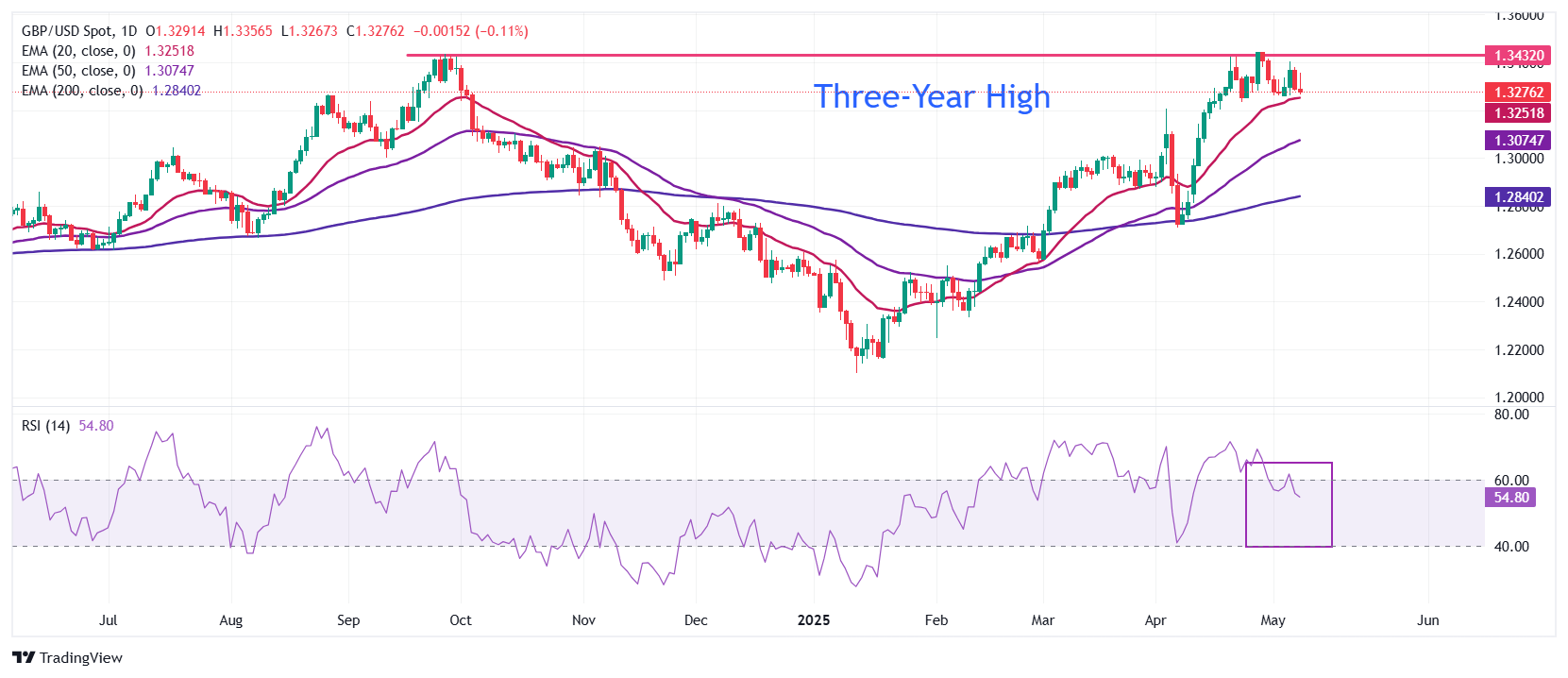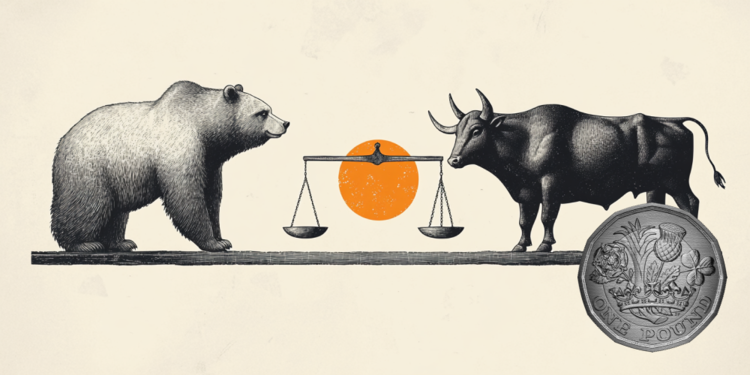- The Pound Sterling is expected to face volatility against its peers as the BoE is set to announce the monetary policy at around 11:00 GMT.
- Investors expect the BoE to lower interest rates by 25 bps to 4.25%.
- US President Trump is set to announce his first bilateral trade deal, reportedly with the UK, since returning to the White House.
The Pound Sterling (GBP) trades cautiously against its peers in Thursday’s European session ahead of the Bank of England’s (BoE) interest rate decision at around 11:00 GMT. The BoE is expected to cut borrowing rates by 25 basis points (bps) to 4.25%, making it the fourth interest rate trim in the current monetary expansion cycle, which it started in August last year.
According to analysts at Bank of America (BofA), Monetary Policy Committee (MPC) member Swati Dhingra is expected to vote for a larger-than-usual interest rate reduction by 50 bps, while the rest of the MPC members will favor a 25-bps rate cut.
BofA analysts add that potential economic risks in the face of tariffs announced by United States (US) President Donald Trump, improving domestic inflation, and declining energy costs have paved the way for an interest rate cut.
For the remainder of the year, the BofA has anticipated that the BoE would reduce interest rates twice.
Daily digest market movers: Pound Sterling edges down against US Dollar
- The Pound Sterling ticks lower to near 1.3280 against the US Dollar (USD) during European trading hours after giving up initial gains. The GBP/USD pair faces pressure as the US Dollar extends its Wednesday’s recovery, driven by the Federal Reserve’s (Fed) signal that there is “no rush for interest rate cuts” amid a “great deal of uncertainty about tariffs” after leaving interest rates steady in the current range of 4.25%-4.50.
- The US Dollar Index (DXY), which tracks the Greenback’s value against six major currencies, moves higher around 100.00.
- The Fed kept borrowing rates steady for the third meeting in a row as risks to inflation have skewed to the upside. “Risks of higher unemployment and higher inflation have risen,” Fed Chair Jerome Powell said in the press conference. “We aim to anchor inflation expectations,” he added.
- Comments from Powell also signaled stagflation risks. Powell said that tariffs so far are “significantly bigger than expected” and that “higher inflation, and lower employment” is possible if large increases in tariffs as announced are “sustained”.
- Going forward, the major trigger for the Greenback will be progress in bilateral trade deals between the US and its trading partners. On Wednesday, US President Trump said that he will unveil a bilateral deal closed with a trading ally on Thursday.
- A report from The New York Times (NYT) has shown that the nation with which the White House will announce its first trade deal will be the United Kingdom (UK).. The impact of the US-UK trade deal is expected to be positive for the US Dollar, whose safe-haven status has been somewhat dented amid uncertainty over the global economic outlook in the face of Trump’s new economic policies. However, the impact of any deal is expected to be limited as Britain already holds a trade deficit with the US.
- Another major trigger for Forex markets will be trade discussions between the US and China, which have been confirmed for Saturday in Switzerland. Financial market participants expect the meeting to be more about de-escalating the trade war than negotiating deals. “My sense is that this will be about de-escalation, not about the big trade deal,” US Treasury Secretary Scott Bessent said on Tuesday.
Technical Analysis: Pound Sterling retraces below 1.3300

The Pound Sterling extends Wednesday’s correction below 1.3300 against the US Dollar on Thursday. Still, the overall outlook of the pair remains bullish as all short-to-long Exponential Moving Averages (EMAs) are sloping higher.
The 14-day Relative Strength Index (RSI) slides into the 40.00-60.00 range, indicating that bullish momentum has concluded. However, the bullish bias remains intact.
On the upside, the three-year high of 1.3445 will be a key hurdle for the pair. Looking down, the April 3 high around 1.3200 will act as a major support area.
Pound Sterling FAQs
The Pound Sterling (GBP) is the oldest currency in the world (886 AD) and the official currency of the United Kingdom. It is the fourth most traded unit for foreign exchange (FX) in the world, accounting for 12% of all transactions, averaging $630 billion a day, according to 2022 data.
Its key trading pairs are GBP/USD, also known as ‘Cable’, which accounts for 11% of FX, GBP/JPY, or the ‘Dragon’ as it is known by traders (3%), and EUR/GBP (2%). The Pound Sterling is issued by the Bank of England (BoE).
The single most important factor influencing the value of the Pound Sterling is monetary policy decided by the Bank of England. The BoE bases its decisions on whether it has achieved its primary goal of “price stability” – a steady inflation rate of around 2%. Its primary tool for achieving this is the adjustment of interest rates.
When inflation is too high, the BoE will try to rein it in by raising interest rates, making it more expensive for people and businesses to access credit. This is generally positive for GBP, as higher interest rates make the UK a more attractive place for global investors to park their money.
When inflation falls too low it is a sign economic growth is slowing. In this scenario, the BoE will consider lowering interest rates to cheapen credit so businesses will borrow more to invest in growth-generating projects.
Data releases gauge the health of the economy and can impact the value of the Pound Sterling. Indicators such as GDP, Manufacturing and Services PMIs, and employment can all influence the direction of the GBP.
A strong economy is good for Sterling. Not only does it attract more foreign investment but it may encourage the BoE to put up interest rates, which will directly strengthen GBP. Otherwise, if economic data is weak, the Pound Sterling is likely to fall.
Another significant data release for the Pound Sterling is the Trade Balance. This indicator measures the difference between what a country earns from its exports and what it spends on imports over a given period.
If a country produces highly sought-after exports, its currency will benefit purely from the extra demand created from foreign buyers seeking to purchase these goods. Therefore, a positive net Trade Balance strengthens a currency and vice versa for a negative balance.
,

